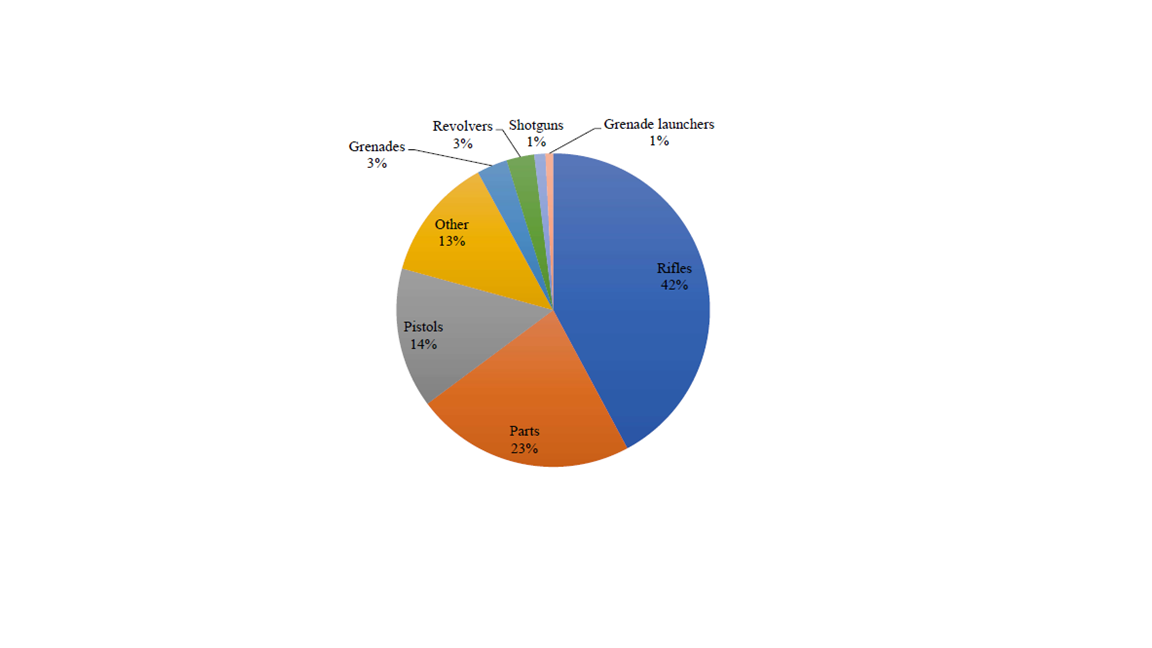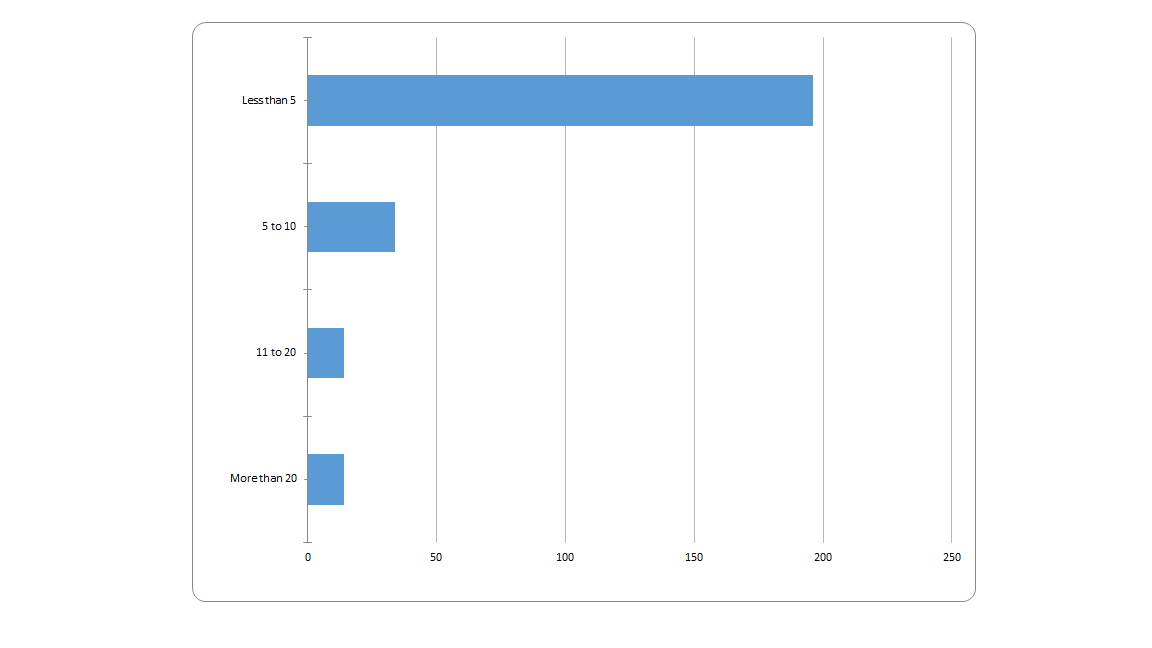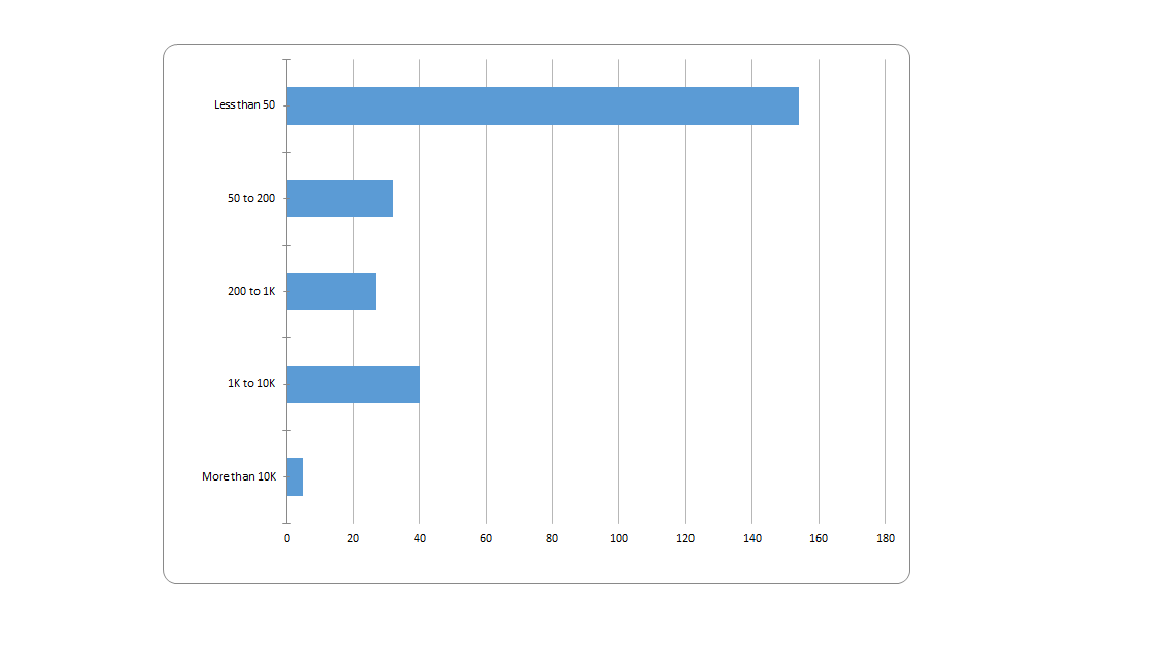Ryan C. Berg: Concerning Weapons Trafficking Trends Drive Further Violence in Mexico
Resource type: Blogs
Ryan C. Berg is a Research Fellow in Latin America Studies at the American Enterprise Institute (AEI) in Washington, D.C. and a Visiting Research Fellow at the CCW during the 2020-2021 academic year. ryan.berg@pmb.ox.ac.uk and ryan.berg@aei.org, @RyanBergPhD
This article engages with the Changing Character of Conflict Platform framework by analyzing changes in Mexican weapons trafficking figures over the calendar years 2018 and 2019. It also adds greater nuance and understanding to the weapons preferences by region of various criminal groups operating throughout Mexico, as gleaned from publicly available seizure data.
Persistent violence in Mexico is not only an existential threat to the countries it borders, but also to Mexico’s economic development and state stability. Under President Andrés Manuel López Obrador (AMLO) and his predecessor, Enrique Peña Nieto, Mexican cartels have frequently outgunned and outmaneuvered the country’s security forces. Worse, violence is engulfing hitherto unaffected regions, such as Mexico City itself.
The years 2018-2020 were particularly barbarous for Mexico, with homicide numbers breaking new records. In 2019, for instance, Mexico witnessed over 35,000 homicides, with nearly two-thirds homicides committed by firearm. Mexican cartels benefit from porous borders and light U.S. gun regulation, with some reports even suggesting they purchase equipment on eBay. According to a new study by the Mexican government, around 2.5 million illicit weapons entered Mexican territory from the United States in the past decade. Recent videos capture members of the Cartel Jalisco Nueva Generación (Jalisco New Generation Cartel)—one of Mexico’s most violent and capable—displaying military-grade firepower while taunting AMLO and the Mexican Army.

Of course, weapons seizure data suffers from a few important limitations. First, the data is static as opposed to dynamic, failing to capture the precise movement of weapons throughout Mexico. Second, very few news articles mention which criminal groups might be involved in the weapons trafficking, leaving researchers to speculate based on the location of the seizure as to the possible criminal groups involved. (Only seven news articles explicitly referenced a specific organized crime group.) Lastly, publicly available data does not capture seizures made as part of secret or classified operations by the Mexican Army. There is the possibility, however, that a large percentage of those seizures are contained in the database, especially the successful operations, given the political pressure on the Mexican government to improve the overall security climate. These limitations notwithstanding, the database allows for several observations about weapons trafficking in Mexico and the government’s efforts to disrupt it.
Contrary to conventional wisdom, which holds that large organized crime groups run most weapons trafficking operations in Mexico, the database paints a picture of more smalltime weapons traffickers operating throughout Mexico. As seen in Figure 2 and 3, 76 percent of weapons seizures involved fewer than five weapons, and 60 percent of ammunition seizures involved fewer than 50 rounds. It is possible that smaller contractors with larger organizations conduct a majority of weapons trafficking in Mexico—or at least those that are more likely to be interdicted. This would make sense if traffickers move weapons and ammunition in small quantities, given their exposure to law enforcement and the potential penalties if caught. If this hypothesis is true, it would also mean that Mexican authorities manage to interdict weapons traffickers upstream, shortly after weapons enter Mexican territory and before they are dispersed throughout the country by subsequent trafficking pipelines.

However, if it is the case that many cross-border weapons traffickers move more than five weapons in a package, the Mexican government’s seizures in 2018 and 2019 occurred at a very low level of the trafficking chain. In other words, a vast majority of weapons seizures in 2018 and 2019 occurred upon the arrest or neutralization of the end user, possibly an individual criminal or cartel member. In this case, the weapons seized would have been part of a larger original bundle, which would decrease in size as the weapons transited strategic points in Mexico’s weapons trafficking pipeline. What is worse from the standpoint of Mexican security, at this late point of seizure, it is possible that the weapon has been used already in the commission of a crime. If true, this hypothesis would be a rather damning indictment of Mexico’s inability to generate actionable intelligence—and/or the political will, possibly because of institutional corruption—necessary to interrupt large-scale weapons trafficking operations.

Perhaps unsurprisingly, there also appears to be a strong geographic component to Mexico’s weapons trafficking trends. The database reveals that the greatest number of seizures occurred in the state of Sonora, with 27 percent of the total. Mexico City followed with 16 percent, and Guerrero with 9 percent. Of the top five Mexican states in terms of weapons seizures, only the state of Sonora borders the United States. This suggests the state of Sonora as the main point of entrance for weapons, before they enter a domestic weapons pipeline in Mexico.
The data on seizures also suggests that region may be a highly relevant variable in determining weapon preferences. While rifles appear the most widely popular overall at 42 percent of seizures, especially in Mexican states characterized as more rural, the large concentration of pistols seized in Mexico City reflects the intensity of the urban conflict there. This is one of the most important trends revealed by the data with respect to Mexico’s weapons trafficking.
Although very few criminal groups are named in the news articles that comprise the database, it should come as no surprise that rifles are the most popular type of weapon, especially in Mexican states characterized as rural. They are more powerful and can operate at range. The inability to conceal them does not represent a significant barrier in an environment largely devoid of people. Many criminal groups maintain strong operations in these hinterlands, where the presence of state institutions is often weak or non-existent. On the other hand, pistols and revolvers proved to be very popular in spaces characterized as urban. Handguns are more apropos for this environment: powerful and deadly at close range, yet concealable and versatile in tight spaces likely to be teeming with people.
The iron river of guns from the United States to Mexico has long been an irritant in the US-Mexico bilateral relationship. While it appears as though there has not been much change in the overall number of weapons trafficked into Mexico, there are some important new trends. These include, most notably, the profile of the average trafficker that appears in this data, as well as the emerging weapons preference based on geography. Mexico’s Army and National Guard should take heed of these trends in fine-tuning their interdiction efforts.